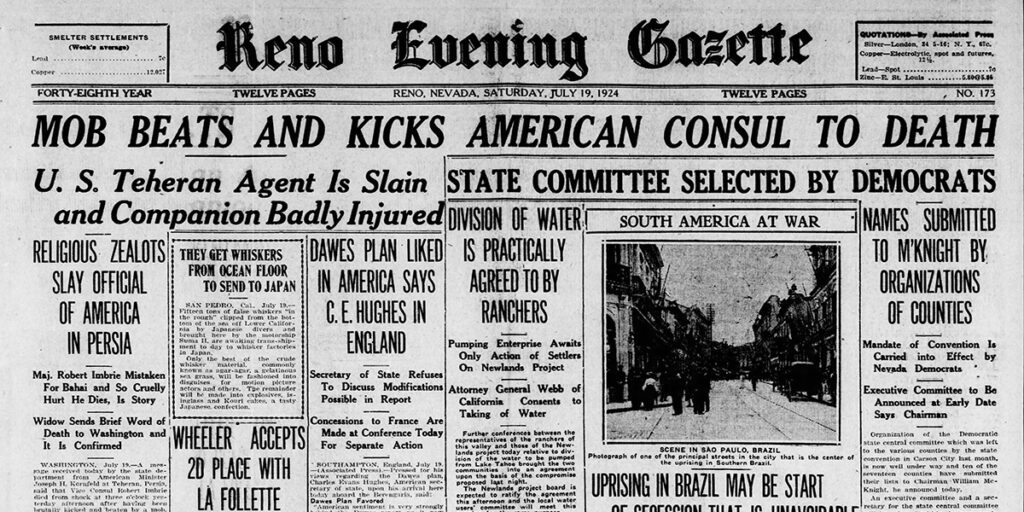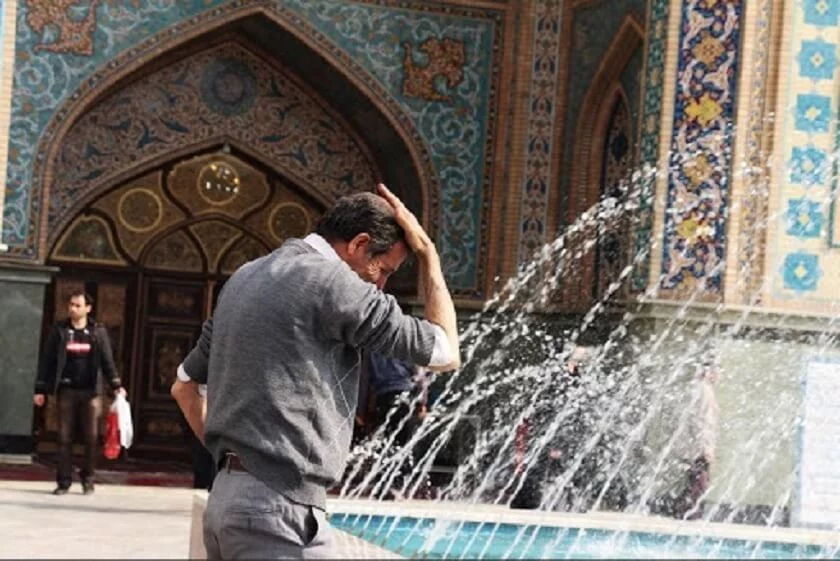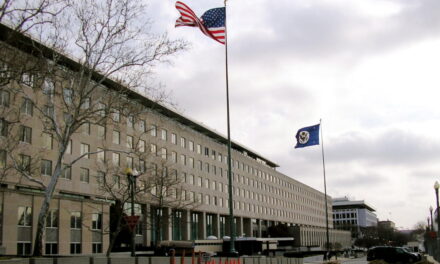Image Credits: Reno Gazette-Journal.
If I asked you what happened in 1989, you’d probably be able to tell me that the Berlin Wall fell. If I asked you what happened in 1979, you’d have a variety of options including the Soviet invasion of Afghanistan, the Iran Hostage Crisis and the Siege of Mecca. But what if I asked you what happened exactly one century ago, in 1924. What would you say, then?
Maybe you’d know some trivial fact, like that the first Winter Olympics were held in France or that Petrograd (St. Petersburg) was renamed as Leningrad. But what about historical events that are still reverberating in today’s news?
Well, here are three events from 1924 that you might not know about that are still influencing what’s going on in the Middle East today.
On March 3, 1924, Turkish leader Kemal Atatürk abolished the Islamic caliphate which had existed for over four centuries. This essentially completed the task of winding down the Ottoman Empire. And it led to the second big event. In Mecca, the Hashemite king, Ali bin Hussein, proclaimed himself caliph. But this was widely rejected throughout the Muslim World. The British and French, who had encouraged Hussein to lead the Arab Revolt against the Ottomans during World War One, were similarly unsupportive. The British, in particular, stopped paying subsidies to Hussein which he had been using to buy loyalty from local tribal leaders. Without this support, Hussein was rapidly defeated by Abdulaziz Ibn Saud, and Mecca has been in the hands of the Saudi Royal Family ever since.
The third event occurred in Iran. At the time, the British and the Americans were competing to develop the oil fields there. The British had installed Reza Khan as the leader in 1921 as part of their effort to fight the Bolsheviks during the Russian Civil War.
In 1924, future CIA director Allen Dulles was serving as head of the Near Eastern Affairs Division at the U.S. Department of State, and he decided to send a man named Robert Imbrie to the consulate in Tabriz to “spy on Soviet Russia and to facilitate the American oil concession for northern Iran that Tehran had offered as collateral for an American loan.”
Imbrie was an interesting and controversial character.
Described as an “adventurer-spy,” he had grown restless at his Baltimore law practice and joined an expedition to Congo in 1911. During World War One, he volunteered to serve as an ambulance driver in the French army. When America became involved, he joined the foreign service and was sent to Petrograd, but was expelled to Finland. Once there, he began infiltrating agents back into the Soviet Union. After the war, he was sent to Istanbul to help Russia’s White Army fight against the Bolsheviks, and it there that he met Dulles. Imbrie’s stay in Turkey ended just as badly as his stay in Petrograd.
Imbrie was recalled to Washington in July 1923 to answer charges that his friendship with Turks had endangered the lives of Greeks and Armenians. He was also accused of calling Louise Bryant, the widow of John Reed and pregnant fiancée of William Bullitt, a Bolshevik. After clearing Imbrie of the charges, Dulles, by this time chief of the Near Eastern Affairs Division at State, assigned him to the consulate at Tabriz…
So, while Atatürk was abolishing the caliphate and sparking the Saudi conquest of Mecca, Mr. Imbrie was entering Iran on a special mission from Dulles. And he was entering a powder keg.
In the Iranian domestic context, Reza Khan sought to curb independent tribal forces and the domination of cities by local bazaar merchants and their clerical allies by establishing a military dictatorship over the entire country. He supported the American financial mission Iran had hired in 1922 in an effort to break dependence on British subsidies. In March 1924, Reza sought to end the Qajar monarchy and make himself president of a republic, as Mustafa Kemal [Atatürk] had recently done in Turkey.
When this effort to establish a Republic badly failed, Reza Khan found it advisable to reach an accommodation with the clerics, and this included giving them a free hand to crack down on members of the Baha’i religion. The Baha’i faith originated in Iran in the 19th-Century, with its founding prophet, Baháʼu’lláh, preaching “the essential worth of all religions and the unity of all people.” This was blasphemy to the ayatollahs.
So, in 1924, the ayatollahs organized a pogrom against the Baha’i, with fatal consequences for Mr. Imbrie.
It began in Tehran with the miracles at the Saqqa-khanih. In Iran, a saqqa-khanih is “a public water fountain that commemorates the Shi‘i martyrs who were deprived of water during the battle of Karbala (680 A.D.).” The story went that in June 1924 a blind man had regained his sight at a fountain in Tehran. Following this, it was alleged that a Baha’i girl had attempted to poison the fountain and had been struck blind. Another story went that a Baha’i had been struck blind at the fountain “when he failed to bless the Shi’a saints, then had his sight restored when he did so.”
With these rumors swirling around, the saqqa-khanih became a gathering place, but one with a strong anti-Baha’i edge. The situation evidently piqued Mr. Imbrie’s interest and, having been temporarily reassigned to the Tehran consulate, he decided to get a look for himself. There’s a report that he previously interceded with the Iranian government on behalf of some American Baha’is, so that might explain his motivation. In any case, he arrived with a camera in the company of a consulate prisoner named Melvin Seymour who is described as “an oilfield roughneck serving a one-year sentence…for assaulting another American oil worker with a baseball bat.” From there, things went badly wrong.
Imbrie seems to have anticipated violence because he had armed his prisoner with a blackjack. Someone called out “Baha’is!” and the crowd attacked. Imbrie and Seymour ran away. They were caught and beaten. Extricated by the police, they were taken to a police hospital for treatment. There they were attacked again, the crowd augmented by soldiers from Reza Khan’s army whose barracks were nearby. Imbrie died of his wounds, including a saber slash to his head.
Mr. Seymour was spared, perhaps because after he was stripped naked it was discovered that he was circumcised, and therefore possibly a Muslim. The death of Mr. Imbrie was an international news story, with “religious zealots” correctly blamed for the attack.

The Americans demanded justice and were not easily satisfied. Eventually, 20 people were convicted and three teenage “scapegoats” received a death sentence, although two were initially commuted to life sentences.
On learning of the commutations, Dulles exploded in anger to the Iranian chargé. The Iranian government reinstated the death sentences. American Chargé Murray refused pleas for mercy, and the executions were carried out in the presence of a U.S. representative, chief legation translator Allahyar Saleh.
As for Reza Khan, he used the controversy to argue for dictatorial powers lest the country continue to be beset by “continuing clerical-led riotous unrest.” And that is how Reza Khan became the Shah of Iran.
Fast-forward to 1953, and we see Allen Dulles at work in Iran again. But this time he’s working with Reza Khan’s son, Mohammad Reza Pahlavi, who succeeded to the throne in 1941. In an effort to prevent the nationalization of the Iranian oilfields, Dulles authorized a coup to depose prime minister Mohammad Mosaddegh. After this failed and the Shah fled into exile, Dulles orchestrated a successful coup to restore the Reza Pahlavi to power.
That brings us up to 1979, when the ayatollahs finally got their revenge, forced the Shah into exile for good, and established the Islamic government that still governs Iran today. As seems common in the region, it’s easier to identify the bad guys than the good guys. The episode with Mr. Imbrie bathed no one in glory, even in retrospect. The religious leaders, then as now, were truly zealots bent on persecuting religious minorities with fanatical mobs whipped up on bullshit. But they were also justifiably suspicious and resentful of foreign influence that did not have the Iranian people’s best interests at heart. Mr. Imbrie’s mission cared nothing for the Iranians, but only for combatting Soviet influence and winning oil concessions. And Reza Khan, like his son, acted with extreme cynicism in his efforts to maintain and increase his power.
As for the Baha’i, they are still brutally persecuted in Iran. Human Rights Watch recently characterized the Iranian revolutionary government’s treatment of the Baha’i as “crimes against humanity,” but as this article shows, the bad treatment at the hands of clerics predates them coming to power in 1979.
The Baha’i prophet Baháʼu’lláh was exiled from Iran in 1853 and eventually imprisoned by the Ottomans in what is now Acre, Israel. His shrine, which is located nearby, is the holiest site in the Baha’i faith, and a magnet for pilgrims. The religion’s world headquarters is located at Mount Carmel overlooking the Bay of Haifa. I recently saw that a Baha’i man from Haifa was killed while serving in Gaza in the Israeli Defense Forces.
What about the Hashemite king Ali bun Hussein of Mecca who declared himself the caliph? He bought us the Saudis who recently invested $2 billion with Donald Trump’s son-in-law Jared Kosher. Hussein’s brother Abdullah established the royal house of Jordan that still rules today. His brother Faisal was King of Syria and later King of Iraq. Hussein died in Baghdad in 1935 while his daughter was enthroned as the queen.
Iraq and Syria lay in ruins today, and Iran extends its reach all the way to Israel’s northern border, across which their puppet army Hezbollah fires rocket after rocket on abandoned towns and cities.
When you take it all in, it’s hard to believe that only a century has passed since Mr. Imbrie decided to visit the Saqqa-khanih on July 18, 1924. Imagine how things might be different if he’d done something else that day.





